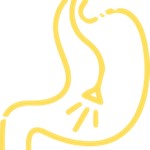About us
At Chelsea Heights Day Surgery & Endoscopy, we provide a wide range of surgical procedures for all patients that come in and visit us. We assure all of our patients that we will use the utmost care and sensitivity when dealing with all issues that you have when you come in to see us.

Endoscopy
Endoscopy is a medical procedure that allows a doctor to observe the inside of the body without performing major surgery. An endoscope (fibrescope) is a long flexible tube with a lens at one end and a video camera at the other. The end with the lens is inserted into the patient. Light passes down the tube (via bundles of optical fibres) to illuminate the relevant area, and the video camera magnifies the area and projects it onto a television screen so the doctor can see what is there. Usually, an endoscope is inserted through one of the body’s natural openings, such as the mouth or anus. During an upper endoscopy, an endoscope is easily passed through the mouth and throat and into the esophagus, allowing the doctor to view the esophagus, stomach, and upper part of the small intestine. Similarly, endoscopes can be passed into the large intestine (colon) through the rectum to examine this area of the intestine. This procedure is called sigmoidoscopy or colonoscopy depending on how far up the colon is examined.

Liposuction, Gynaecomastia & other Cosmetic Surgeries
...Liposuction... Liposuction is a procedure that removes fat from the abdomen, thighs, buttocks, arms and throat. A narrow tube (cannula) is inserted through a skin incision and the fat is sucked out with a powerful suction pump. The procedure can be done under local or general anaesthetic. A pressure garment needs to be worn for some months to help the skin to contract and contour. The area will be bruised and swollen for weeks or months. Complications can include failure of the skin to contract, causing a corrugated look. A lipectomy is an operation that removes extra skin as well as fat. ...Breast reduction (reduction mammoplasty)... Incisions are made beneath each breast and around the areolae of the nipples. Excess skin and fat are removed. The remaining breast tissue is remodelled, and the nipples are repositioned and stitched in place. Scars can take up to one year to fade but will remain visible for life. Complications include reduced nipple sensation. ...Gynaecomastia surgery... Gynaecomastia surgery reduces breast size in men, flattening and enhancing the chest contours. In severe cases of gynaecomastia, the weight of excess breast tissue may cause the breasts to sag and stretch the areola (the dark skin surrounding the nipple). In these cases the position and size of the areola can be surgically improved and excess skin may be reduced. Plastic surgery to correct gynaecomastia is technically called reduction mammaplasty. ...Eyelid surgery (blepharoplasty)... The eyelids are cut along their full length to the ‘crow’s feet’ wrinkles at the outer corners. Excess skin and fat are removed. Laser resurfacing may also be performed to treat remaining wrinkles. This procedure may take one to two hours and can be done under local or general anaesthetic. The eyes will be bruised and swollen for a few weeks. Side effects include blurred vision, overproduction of tears and changed shape of the eyes (usually only temporary).

Lumps & Bumps Surgery
Lumps and bumps are localised swollen areas that occur on or under the skin. Infections, tumours, body’s response to trauma or injury cause lumps and bumps. Bumps can be caused due to acne, cysts, boils, moles, lipomas, skin rash, or skin cancer. Lumps are commonly called tumours which can be benign or malignant. Benign tumours are non-cancerous and do not spread to other parts of the body, and may include cysts, nodules, lipomas, haematoma, hemangioma, and papilloma. Malignant tumours are cancerous tumours, which include breast tumours, that invade the surrounding tissue and spread to other parts of the body.

Child & Adult Circumcision
Male circumcision is an operation to remove the foreskin that covers the tip of the penis. The functions of the foreskin include protecting the head of the penis and contributing to sexual sensations. While recent research suggests that circumcision may bring some medical benefits, some doctors believe these are too small to justify surgery. A medical circumcision is a circumcision performed to treat a disease, such as pathological phimosis (lichen sclerosis), recurrent balanitis or recurrent urinary tract infections. A request circumcision is a circumcision performed for non-medical reasons, such as parental preference, religious reasons or to potentially prevent disease at some future time.